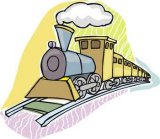
Worksheets and No Prep Teaching Resources
Reading Comprehension Worksheets
Transportation

Transportation
 Worksheets and No Prep Teaching Resources Reading Comprehension Worksheets Transportation |
 Transportation |
| edHelper's suggested reading level: | grades 5 to 7 | |
| Flesch-Kincaid grade level: | 9.82 |
|
Along Came the Engine (Part 1)
By Trista L. Pollard |

|
 1 Horses, buggies, and carriages were the "ride" of choice for hundreds of years. Then along came the engine and modern transportation was born. Engines use different forms of energy to produce mechanical motion in machines. If it wasn't for the invention of the engine, we would not have the types of automobiles, trucks, airplanes, and space shuttles we have today.
1 Horses, buggies, and carriages were the "ride" of choice for hundreds of years. Then along came the engine and modern transportation was born. Engines use different forms of energy to produce mechanical motion in machines. If it wasn't for the invention of the engine, we would not have the types of automobiles, trucks, airplanes, and space shuttles we have today. |
Create Weekly Reading Books
Prepare for an entire week at once! |
| Leave your feedback on Along Came the Engine (Part 1) (use this link if you found an error in the story) |
 |
Transportation
|